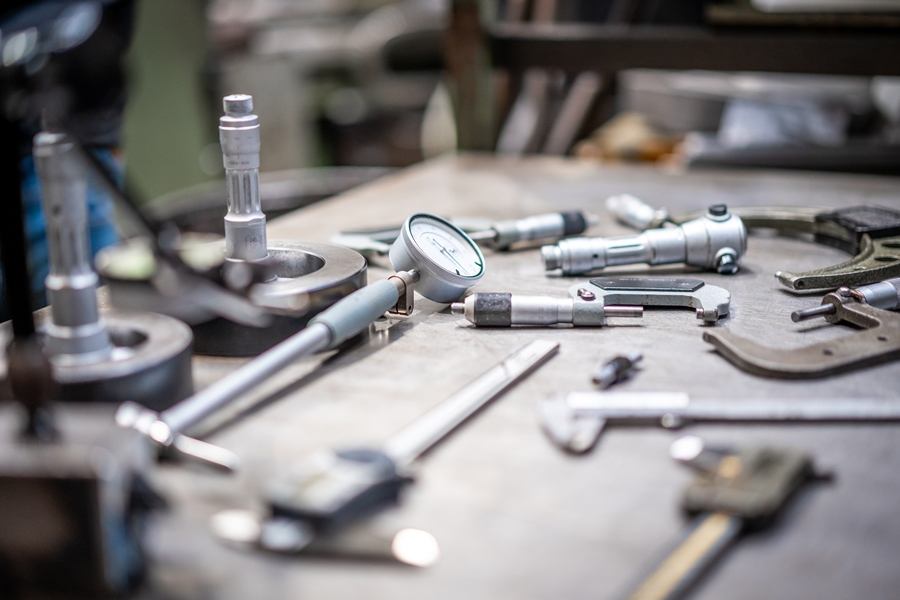
A sheet metal gauge is a technique and way of measuring the thickness of a material based on density.
For example:
Thickness = sheet weight
Material Density * Sheet Area
We use gauge charts and measurement tables for a range of different metals to ensure that we get calculations correct for each project and it’s important to note that different metals use different gauge charts, so working with an experienced fabricator is your best chance at ensuring the material you opt for is fit for purpose—you can find out more at morfabrication.com.
This post looks at the types of gauge charts available and the criteria you should use to choose the right solution for you.
What are sheet metal gauges?
Sheet metal gauges are a traditional way of measuring the thickness of a material, and you have a choice of gauge sheet metal in the form of a calliper or ultrasonic which should be supplemented with the correct gauge charts.
For example, the types of sheet metal gauges available include a calliper gauge, where fabricators can measure the internal diameter of tubes or cylinders as well as the length; there are three different types of calliper gauge to support this:
- Vernier – suitable for measuring round products
- Dial – a dial is used to find the fraction of an inch or a millimetre
- Digital – a tool that allows you to measure internal and external distances
Alternatively, ultrasonic gauges measure how long it takes for a sound pulse to travel through an object and return to the metre. This can be an essential gauge as different materials transmit sound waves at varying velocities. For example, you will find this to be faster in hard materials and slower in soft materials.
The gauge for both of these measurements helps to determine the thickness levels of the sheet metal in inches and millimetres; the higher the number, the thinner the sheet metal.
These figures then must be compared to a conversion chart, which we will look at next.
Guide on sheet metal gauge
Designed to match a material’s gauge to an equivalent thickness as a decimal, a gauge chart allows you to choose the right material for your project or product.
It is essential that you use the right chart for the right material, i.e., stainless steel will use the stainless steel gauge chart, aluminium will use the aluminium gauge chart, etc., because you need to ensure you achieve the right tolerances. Trust us, working with incorrect tolerances will enormously affect the design and impact overall quality.
(The acceptable material thickness variation within each gauge is known as tolerance.)
The most commonly used measurement for sheet metal gauges is the standard wire gauge, also known as the British Standard Gauge; however, different metals will use different gauge systems.
As we see the gauge number increasing, the thickness of the material will decrease accordingly.
Sheet metal fabrication services
When considering the right material selection for your project, it’s important to take into consideration several factors, including:
Material properties – does the material meet your design requirements? For example, a stronger material may allow for a thinner metal gauge. Consider material strength, density, corrosion resistance, cost, conductivity, malleability, etc. And work with specialist sheet metal fabricators who have experience in this field to provide you with appropriate information and advice.
Fabrication process—What aspects of the fabrication process are required, i.e., bonding, and welding? Professional sheet metal fabricators can advise you on the best processes for your project.
Design specifications—What is the required thickness level as set by your design specifications? Does this meet engineering and steel calculations? It’s important to be aware that thicker materials are more costly to produce and ship, so they will need to be built into your overall budget.
(Check out our post on friction drilling in fabrication to achieve great metal profiling.)
Durability—Does the project involve high rigidity and strength, so it will require a lower gauge sheet material, or vice versa?
Efficiency – is the material in question fit for purpose?
Ferra’s metals—are you working with carbon steel, cast iron, wrought iron, etc.? Are you using materials that provide tensile strength and durability?
Non-ferrous metals—Do you require materials that are malleable and provide a high level of resistance to rust and corrosion, such as aluminium, copper, lead, zinc, and tin?
Choosing the right level of thickness/density for your metal material is important to ensure that all parts work together effectively and safely, are efficient with weight, and are cost-effective for the project. You should base your decision on the nature of the project and what exactly you want to achieve.
How do you know you’ve chosen the correct level of thickness?
Work with the professional team at Morfabrication.
If you’re looking for sheet metal fabrication near me, look no further.
We can help you with all of your sheet metal requirements, ensuring that the materials chosen are fit for purpose, can withstand the environment in which they are intended, and are of high quality.
We stock a full range of sheet metal in a variety of thickness levels and material types, suitable for use throughout the construction sector, manufacturing, automotive, aerospace, and marine industries, as well as for design architecture.
To find out more, contact us today at 0191 816 2718 or email your requirements to info@mofabrication.com.
